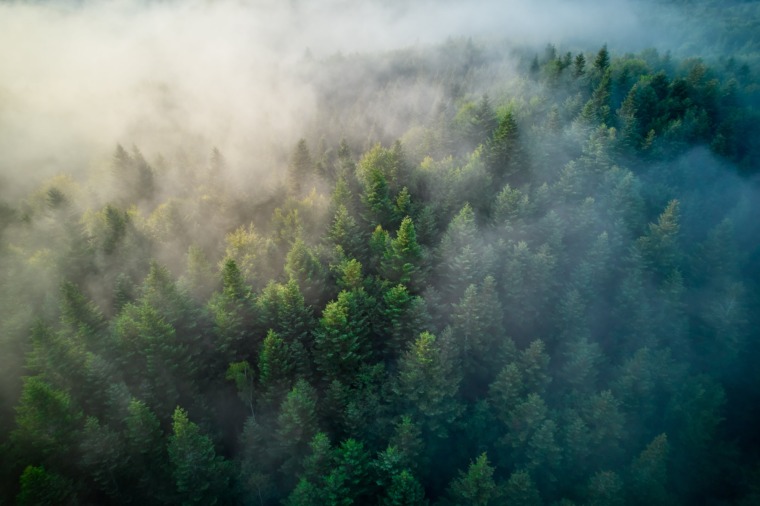In the heart of the Šumadija, in a near vicinity of the town Topola, slowly arises the rocky hillside called Oplenac.
At the crossroads of four lanes, this place guards the tradition and culture of the Serbian people from the days of old. Its fascinating dense forests, fertile lands, abundant fauna and intoxicatingly stimulant fresh air exude a special energy which you simply cannot miss.
The villagers often say how one sleeps less at Oplenac because air is so fresh, thus much less hours of sleep are needed in order to feel completely rested.
Resplendent and sumptuous nature and soil, diverse fauna and favorable climate of this region could not even resist Đorđe Petrović-Karađorđe, so in 1762 he moved to the Oplenac’s foothill. That moment will completely change the destiny and how this little provincial town’s wheels of fortune were turning, a smallish town which numbered no more than 40 houses at that time. For Oplenac became an important place of making paramount political and governmental decisions, a crucial center for cultural events, and remained the symbol of Serbian liberation from the Turks ever since.
Wars, rebellions, uprisings, but also to a large extent struggles between the dynasties have taken its toll on culture, history and the distinctiveness of the city and its buildings of that time, but it never affected the spirit of religion and uniqueness of the people. This air spa, as it is more popularly called, has managed to preserve its uniqueness, tradition, hospitality and kindness, but also fascinating sights that captivate even the most demanding minds with its beauty.
One of the sights that adorn Oplenac is the Church of Saint George, an imposing five domed building whose interior is covered with more than 40 million of colored glass tiles which, with 15.000 different shades of color depict the copies of frescoes from 60 Serbian medieval churches and monasteries. Perhaps the best testimony of the temple’s refined beauty lies in the visitors’ gazes full of admiration, who come from all around the world.
Only a few meters next of the Church of Saint George is the house of King Petar I, which is now a unique exhibition area. History devotees and connoisseurs of antiques can enjoy the exhibition of personal items, documents and pictures of Karađorđević dynasty which have enormous social, historical and cultural significance and are of great value.
In addition to Saint George’s Church, heritage of Serbian history is preserved at Oplenac in a form of an old and quite modest Church of the Holy Virgin, also called the Church of Karađorđe. The uniqueness of this Church lies in the fact that it preserved, to a great extent, its authentic appearance, hence its warmth and modesty represent a true example of the old, traditional Serbian Church. It is interesting that the bells of this rustic Church, made in very harmonious proportions, were the first ones that chimed the spirit of freedom in Serbia, after they were imprisoned by several centuries of slavery under the Turkish Empire.
Near the Church of Karađorđe is also located his residence, or to be precise, the one (and only) part that has been preserved. Residence was built out of stone, and at the same time it was the southern wall of the Karađorđe’s city fort. Vožd Karađorđe has lived and worked here. This whole area now represents a unique exhibition space where visitors can admire objects, documents, relics and paintings that testify about the old times, and of Karadjordje’s life and work exactly in the place of occurrence.
Of the Oplenac’s rich soil and favorable climate testify the widely known Oplenac’s famous vineyards. The tradition of growing royal vines and making the royal wine began Karađorđe, and is continued by his heirs. Today, nearly 12 acres is planted with the grapevines, while total production amasses the total of 15.000 to 20.000 liters of different varieties of wine, high in quality and rich in refined taste, which have won numerous gold medals in the past.
Oplenac is known for good quality wine, but also for the now famous Oplenac harvest, also called grape and wine festival, which took place ever since 1962. During a three day event, from the city center of Topola to the Oplenac hillside, street stalls are filled with grapes, wine, fruit, souvenirs and products of traditional crafts. At that time, on the streets can only be heard song and laughter, felt the aroma of a real Serbian traditional cuisine and pleasant royal wine, and can be seen the exhibition of ancient handcrafted artifacts, performances of the folk dances and much more.
Because of the culture and history, nature and climate, impressive buildings and monuments, as well as special energy and ambient which is felt by the people who visit Oplenac, this place truly represents a unique location for recreation and resting, learning about cultural and historical monuments of Serbia and enjoying the traditional cuisine and the royal wine.
How to get to the Oplenac?
Oplenac is located in the municipality of Topola, which is about 80 kilometers from Belgrade. From Belgrade you can get to the Oplenac by Ibar highway to Lazarevac and then travel another 15 km through Arandjelovac.
From the direction of Eastern and Southern Serbia you should go by the highway Niš-Belgrade and exit in Lapovo, then go through Rača Kragujevačka and village Viševac (birthplace of Karadjordje).
When you’re here, do not miss …
Risovača cave, now known as the Paleolithic museum, was home to the proto-Neanderthal type.
Bukovička spa, recreational walking by Bukulja hillside.
If you are planing to stay longer than a day in this area of Serbia, Serbia.com recommends accommodating at Hotel Stari Oplenac: www.hotelstarioplenac.rs
Related Articles

Zasavica: A Peaceful Nature Retreat by the River
November 1, 2025
Carska Bara – The Imperial Wetland of Vojvodina
September 17, 2025
















